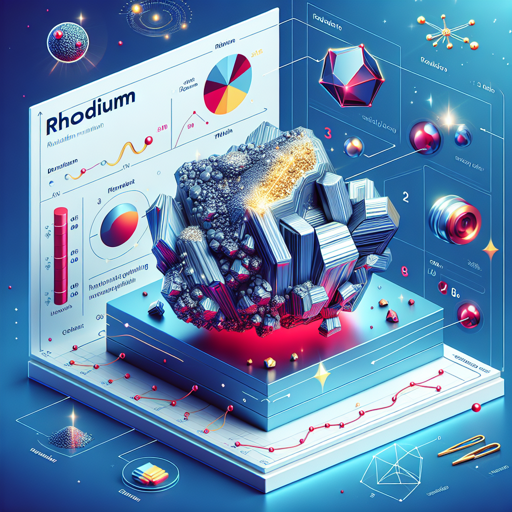Exploring Rhodium Market Dynamics
Uncover the intriguing world of rhodium market dynamics and the factors that dictate its pricing.

Exploring Rhodium Market Dynamics
Introduction
Rhodium, one of the rarest precious metals on Earth, has always been an object of fascination for geologists, investors, and earth science enthusiasts. This article takes you on a fascinating journey exploring the dynamics of the rhodium market and the factors that influence its pricing.
Rhodium: The Precious Metal
Rhodium is a silvery-white element that belongs to the platinum group of metals. Its exceptional properties such as high reflectance, resistance to corrosion, and excellent catalytic characteristics make it valuable in various industry sectors, notably the automotive industry for its use in catalytic converters.
Supply and Demand: A Delicate Balance
The supply and demand dynamics significantly influence the rhodium market. Rhodium is primarily sourced from South Africa, producing approximately 80% of the world’s supply. Any geopolitical instability or changes in mining regulations can greatly impact the global supply.
On the demand side, the automotive industry accounts for over 80% of rhodium’s demand, with the rest being consumed by the jewelry industry and electrical equipment manufacturers. Fluctuations in these industries directly affect rhodium’s demand.
Mining Production and Pricing
Rhodium’s rarity and the complexity of its extraction process add to its high price. It’s often produced as a byproduct of platinum and nickel mining, making its availability directly linked to the production of these metals.
The table below gives an insight into the global rhodium production and its average price over the last five years:
| Year | Rhodium Production (oz) | Average Price ($/oz) |
|---|---|---|
| 2016 | 680,000 | 725 |
| 2017 | 695,000 | 975 |
| 2018 | 710,000 | 2,285 |
| 2019 | 720,000 | 5,645 |
| 2020 | 650,000 | 10,025 |
“Rhodium’s rarity and unique properties make it one of the most intriguing and volatile markets in the world.” - Anonymous
Market Volatility
The rhodium market is known for its extreme volatility. The price can rapidly increase or decrease depending on market dynamics. For instance, in 2008, rhodium prices spiked to an all-time high of over $10,000 per ounce due to a power crisis in South Africa that disrupted mining operations, only to plummet to $1,000 in the aftermath of the global financial crisis.
For more information on the historical price fluctuations of rhodium, you can visit Minerals.net.
Conclusion
Understanding the rhodium market dynamics provides a fascinating insight into how various factors such as supply-demand balance, mining production, and industry applications influence the pricing of this precious metal. As we continue to rely on rhodium for various industrial applications, the importance of monitoring these market dynamics only grows.